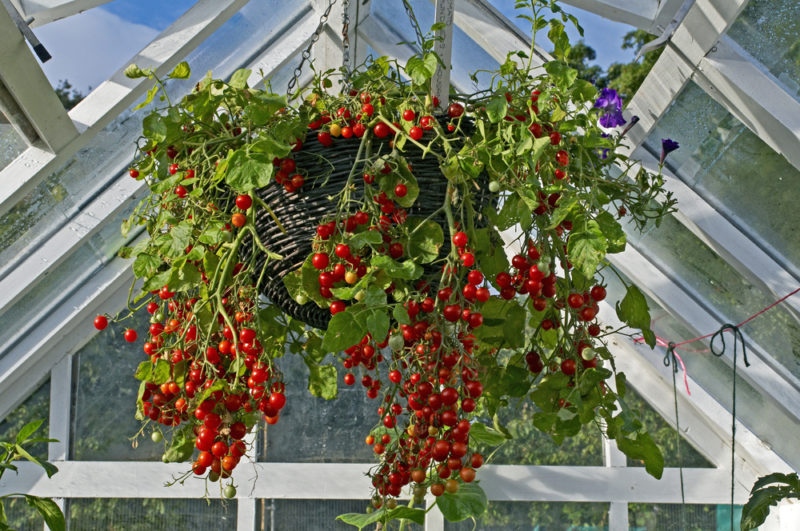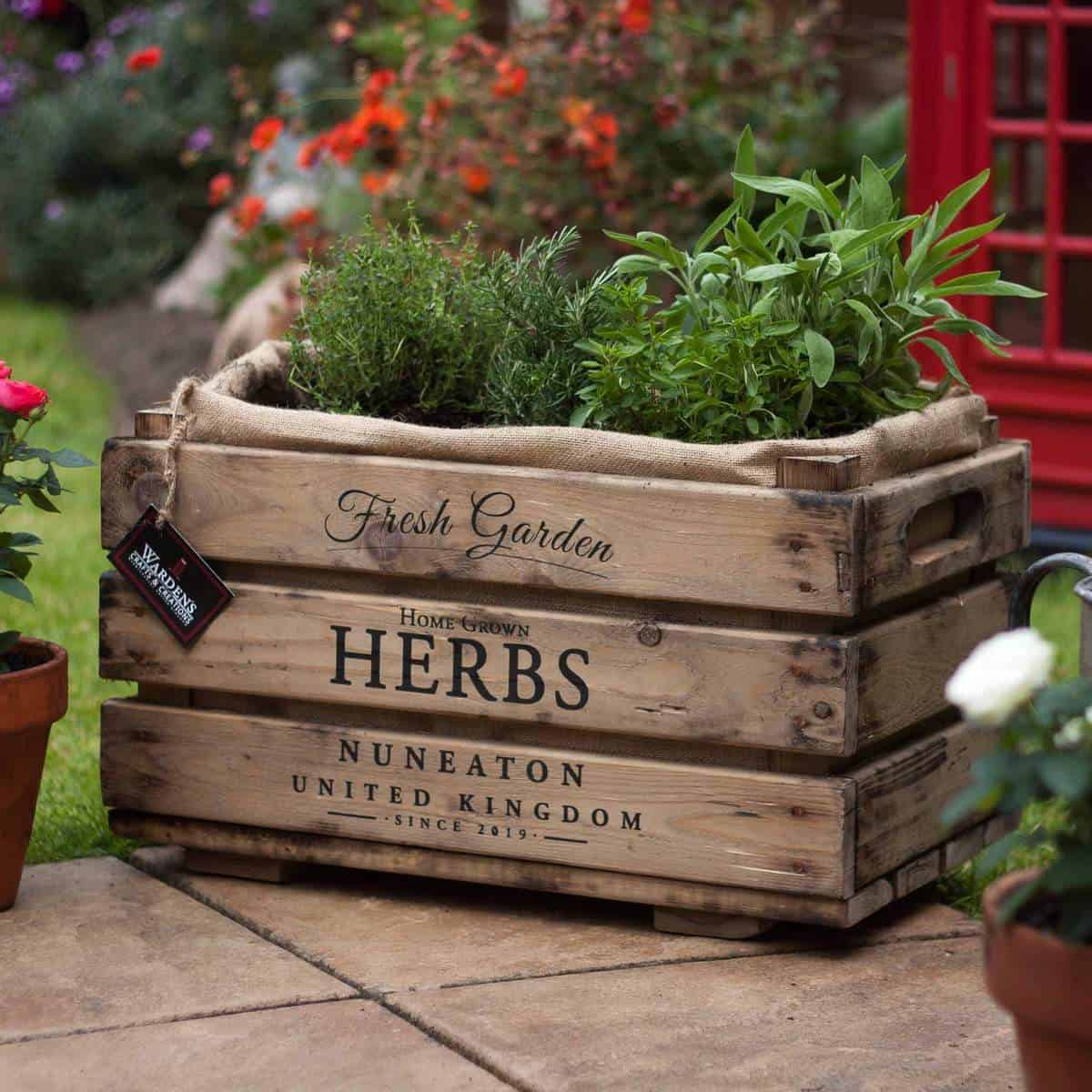Given that I’ve been writing all kinds of guides to growing your own vegetables, and looked at some practical hanging basket tips a few weeks ago, it seemed like a good idea to combine the two topics! When you’re short on space, it can seem impossible to embrace sustainability by growing your own food, but hopefully this post will give you inspiration by showing you how to grow vegetables in hanging baskets.

Using hanging baskets in your garden
Hanging baskets are usually associated with abundant, overflowing displays of flowers (especially in traditional-style British gardens). They look fantastic hanging on either side of a front door, and bring vibrant colour to fences, porches and balconies. Having said that, choosing to grow vegetables in hanging baskets can be a much more efficient use of space – you can still get some fantastic foliage, but you’re also left with something delicious to enjoy at the end of the season.
There are several different hanging basket styles, which we look at in our guide to hanging baskets, so make sure you check it out! Woven baskets are beautiful, although mesh baskets can be slightly more practical for growing vegetables through the sides. You can also make hanging pots out of reclaimed materials, like colanders or tin cans, for a rustic, vintage garden feel.
Choosing vegetables to grow in hanging baskets
Of course, not all crops are suited to the hanging basket life. Some need to spread out further, and others simply don’t look that pretty! So, once you’ve decided to grow vegetables in hanging baskets, here are some of the best types to choose:
- Strawberries are very happy in container gardens – including hanging baskets – especially if you choose smaller varieties, like alpine strawberries. Plant them early and keep them topped up with water and fertiliser, and by the middle of summer you should see delicious red fruits draping over the edge of your basket. Take a look at our guide to growing strawberry plants for more tips.

- Carrots have amazing fluffy foliage that looks great in a hanging basket, particularly mixed in with a vegetable that can trail down, like peas. Carrots will need a fairly large hanging basket to grow fully, and stump-rooted varieties are best for this.
- Tomatoes, specifically bush type tomatoes, are great contenders for a hanging basket garden. Look for varieties that are cultivated specifically to grow in hanging baskets for the best results. Like strawberries, you’ll need to keep them well-watered and fed to get a delicious yield. Again, we’ve got a tomato-growing guide you can check out.

- Chilli peppers grow in a similar way to tomatoes, and pruning them into a bush can give you a vibrant display when they come into season.
- Cucumber is a more unusual hanging basket inhabitant, but its pretty flowers and trailing vines make surprisingly pretty displays.
- Small lettuce varieties provide lots of dramatic colours and leaf shapes as a centrepiece in hanging baskets.

- Radishes and beetroot don’t need much space and, like carrots, are great growing-buddies with trailing plants. If you’re not sure about trailing veg, combining them with edible flowers like nasturtiums is a good shout for both flowers and foliage.
- Herbs – okay, not strictly vegetables – do extremely well in containers. Parsley and thyme look and smell fantastic in any garden, with the added benefit of giving you delicious edible leaves when you prune them. Mint is also great for hanging baskets, but it can be a bit of a space hog, so you might want to keep it on its own.

Hanging basket tips
As I’ve mentioned a couple of times, hanging baskets can be a slightly hostile environment for plants if you don’t take good care of them. Containers always lose moisture quicker than in-ground growing beds, and hanging baskets are usually in very sunny positions where plants can get scorched.
Choosing to grow vegetables in hanging baskets means you’ll need to come up with a routine for watering (basically daily) and fertilising them (up to weekly). One method for helping them to retain water is to take a small plastic container with holes in the bottom (like a flower pot, but a yoghurt pot with holes poked in will work too), and embed it into the middle of the hanging basket (this video shows you what I mean). By pouring into this reservoir, water will seep out slowly rather than rolling straight off the top or out the bottom.
Don’t forget to take a look at our list of spring vegetables to get growing this season, our list of the best vegetables to grow in containers and also our tips on turning your ornamental garden into a beautiful, practical foodscape. If you decide to grow vegetables in hanging baskets this year, let us know what you plant and how you get on!

Save this pin for later






